What you learn here
▶How does car suspension work?
▶Car suspension structure
▶what is a shock absorber?
▶what is a suspension spring?
▶Types of car suspension system
Work of the car suspension
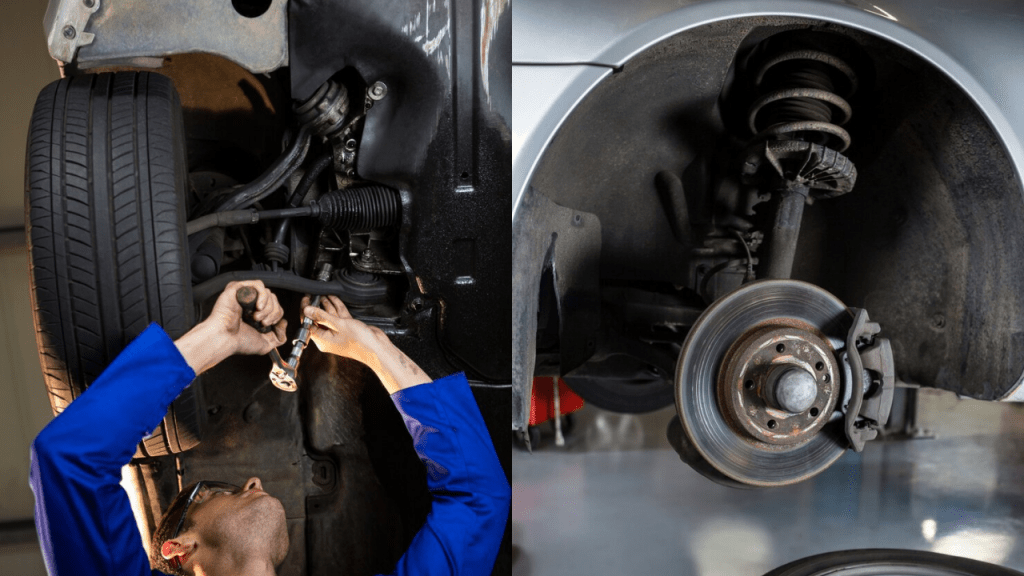
How does car suspension work?
The car is running on the power of the engine. Engine power is transmitted to the tire and the force that the tire kicks the road surface is transmitted to the body then the car starts to move. The car suspension is a device that connects the body and the tire and also supports the car’s weight.
If only to transmit power, it is only necessary to fix the axle to the body, but with that method when the car runs, the vibration of the road surface will be transmitted directly to the body, which makes the ride feel very bad. For the car, the tire moves up and down to improve the ride comfort and absorbs the vibration during running.
Also, the car body does not tilt greatly even on a large undulating road, and it is required to be able to run stably. For that reason, the suspension is devised so that the body is always stable while keeping the tire in contact with the road surface.
Car suspension function
The car suspension has two functions
1- to improve the ride comfort
2- to ensure the steering stability.
How to improve ride quality in a car
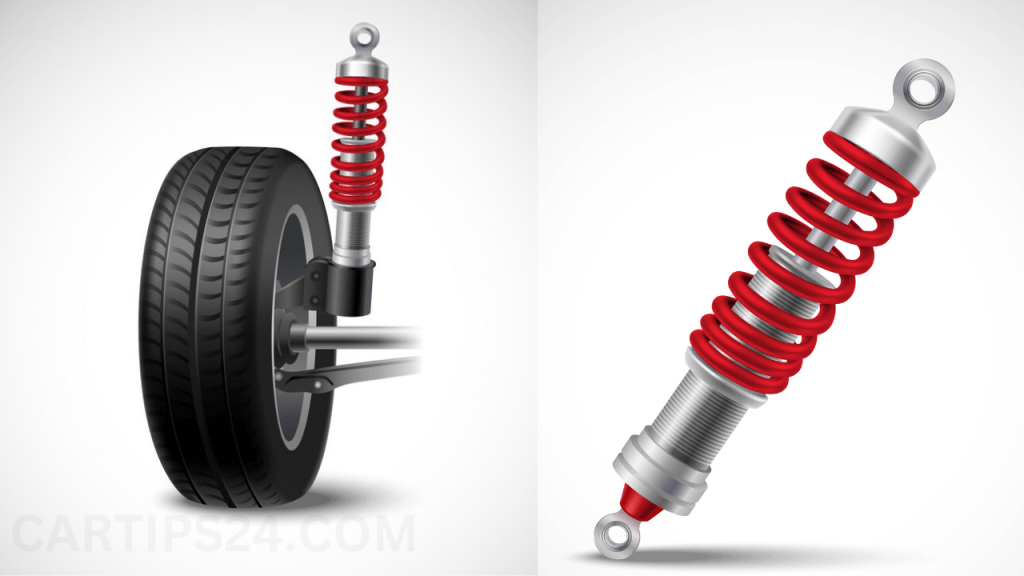
suspension spring
The car supports the body with a spring to improve ride comfort. This spring absorbs the movement of the tire and reduces the vibration transmitted to the body. Even if the tire goes up and down on the uneven road, the spring expands and shrinks to absorb the shock, so the car body just gently swings and we get a good fluffy ride feeling.
However, if we support the car body only with a spring, the car body will shake continuously and the ride comfort will be worse.
Therefore, a mechanism to suppress fluffy movement by this spring is necessary.
What does a shock absorber do
The shock absorber works to suppress the fluffy movement by the spring. To suppress the movement of the spring, it is necessary to disturb the expansion and shrink of the spring. Therefore, the shock absorber is a mechanism that exerts a force that resists the expansion and shrinking of the spring.
Moving a piston with the hole in a cylinder filled with oil generates a force-resisting piston motion as the oil passes through the hole. This force absorbs the force that the spring keeps moving, so it will be a calm and gentle movement and better ride comfort.
Steering Stability – What system provides steering stability and good handling
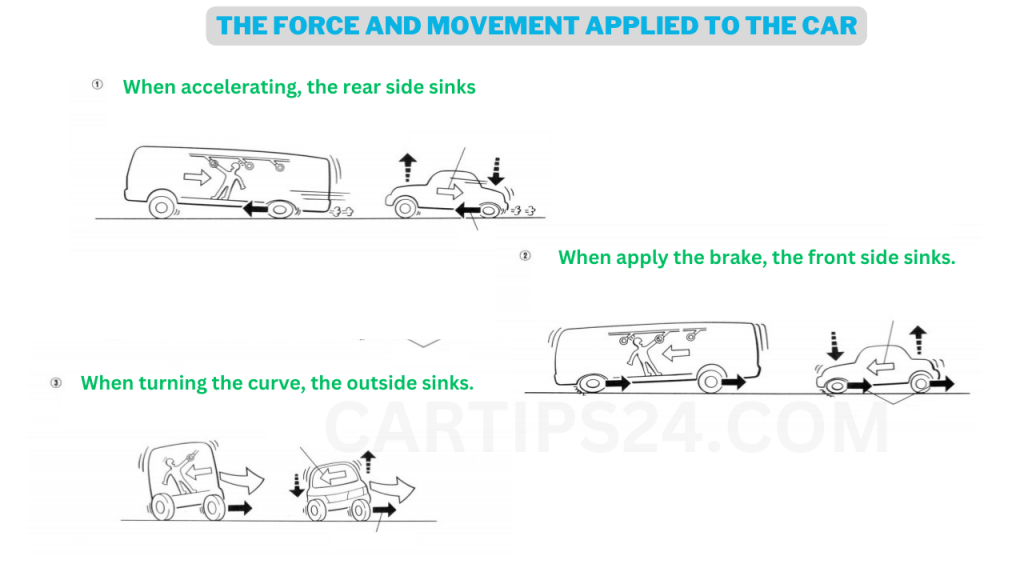
Support the force applied to the car
When the automobile starts, accelerates and brakes, force is applied to the front and rear direction of the car.
In addition, force in the lateral direction is exerted when turning the curve, and force is applied upward and downward when passing through the uneven road surface or step. The suspension receives these forces and keeps the tire always in the correct position, ensuring unchanged maneuverability and stability.
If you are standing and holding the strap in a bus, your body will be moved in various directions by the movement of the bus. This is because force is applied to your body. The body of the car also receives force from the tire when traveling, and moves in various directions.
( learn how a clutch system works)
What is the function of a suspension control arm?
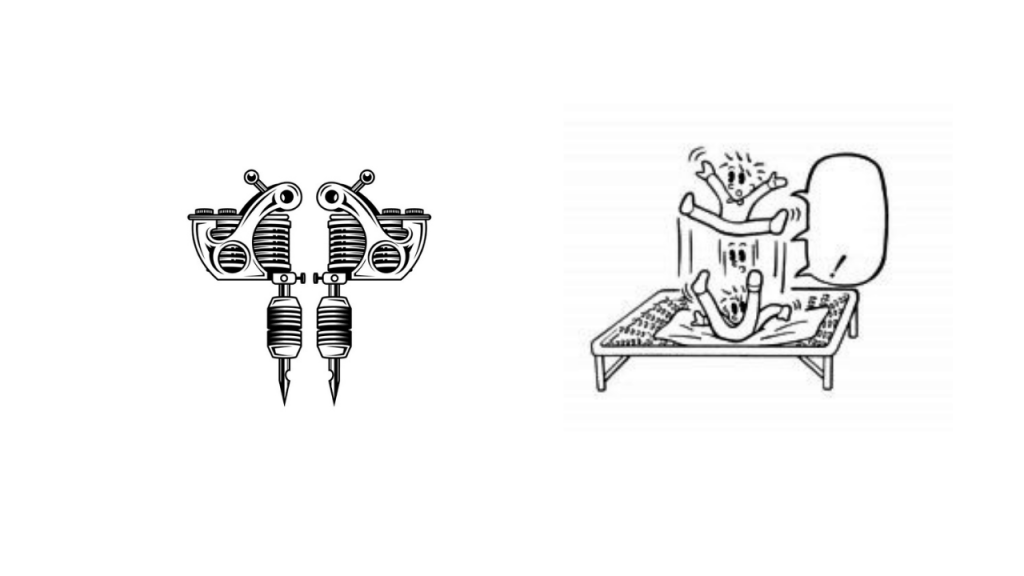
Even if the tire and body are subjected to force from various directions, the suspension arm restricts the movement of the tire to only the determined range, and the force in the front-rear and left-right direction applied to the tire is received by the suspension arms themselves.
In addition, a rubber bushing is used for the attachment to the body, and the impact that the suspension arm receives is absorbed by the deformation of the rubber so that vibration is not directly transmitted to the car body.
Function of the suspension stabilizer
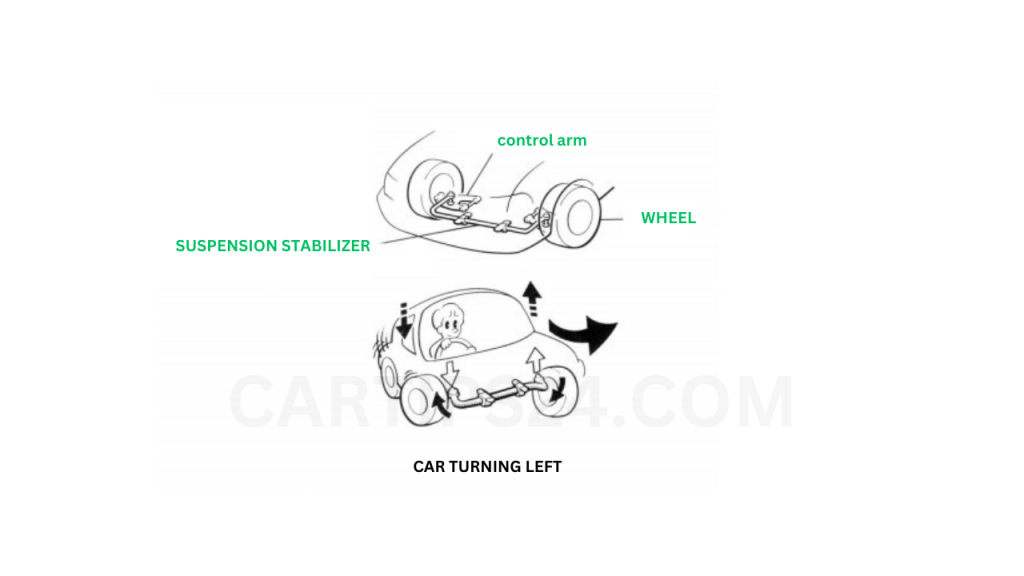
When the car turns the curve, the car body tilts outward. At this time, if the tilt of the car is large, not only does the ride comfort deteriorate but also the tire rises and it becomes a very unstable state. We can reduce the tilt of the car by making the suspension spring too hard, but the ride will be bad.
Therefore a U-shaped bar called a stabilizer is attached to the suspension arm, when the car tilts and one tire sinks, the bar is twisted and works as a spring, lifting the body on the sinking side to suppress the tipping of the car. When the tires on both sides sink by the same amount, the bar will not be twisted, so it will not work as a spring and will not miss the ride comfort when going straight.
The front and rear suspension stabilizer bars, also known as sway bars or anti-roll bars, are components of a vehicle’s suspension system designed to improve stability and control during cornering and sudden maneuvers.
Front Suspension Stabilizer Bar
The front stabilizer bar is a metal rod that connects the front suspension components on either side of the vehicle. It is typically mounted to the front struts or control arms. Its primary function is to reduce body roll or sway during cornering. When the vehicle turns, the forces acting on the body can cause it to lean to one side. The front stabilizer bar helps resist this movement by transferring force between the left and right sides of the front suspension.
This results in improved handling, better traction, and a more stable driving experience, especially during sharp turns.
Rear Suspension Stabilizer Bar
The rear stabilizer bar serves a similar purpose as the front stabilizer bar but is located at the rear of the vehicle. It connects the rear suspension components on either side, typically attached to the rear axle or suspension arms.
Like the front stabilizer bar, its main role is to minimize body roll during cornering, promoting better balance and control. This is particularly important for maintaining traction on all four wheels and preventing the vehicle from swaying excessively.
(Proper Gear shifting of the car)
What is suspension structure?
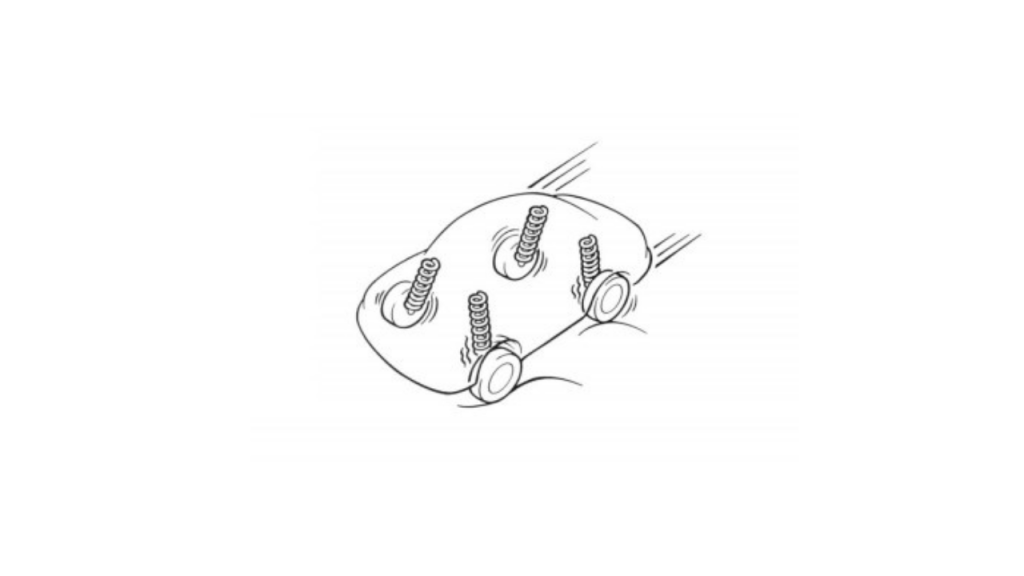
The suspension comprises various parts, and each part carries out a balanced movement wholly while sharing the role.
Let’s take a look at the movement of each part of the rear suspension an example when a car rides on a step on the road surface.
When the tire runs on a step, the received force is transmitted to the axle carrier that supports the tire. The applied force from the road surface is divided into a direction to escape backward and a direction to push up. The force trying to escape to the rear is received by the suspension arm and the strut rod connecting the axle carrier and the body, absorbed by a slight deformation of the rubber bushings, so the tire hardly moves to the rear.
On the other hand, the axle carrier moves upwards because the tire has a structure that can move with respect to vertical force. Then, the suspension arm transmits the force to the suspension spring and the shock absorber, and since the upper end is fixed to the body, it contracts and absorbs the force.
As the suspension arm moves, the stabilizer bar is also moved. If the arm moves in the same direction on the left and right at the same time, the stabilizer bar will be turned in the same left and right directions and will not be twisted.
However, if you ride on a step on one wheel or turn around the curve and the outside sinks in, the stabilizer bar is twisted, so it generates force to push the tire (= lifting the body) and helps the suspension spring.
( Top 9 affordable luxury cars in 2024 )
what is the best type of suspension?

There are various kinds of car suspension depending on the type and use of the car, but they can be roughly divided into rigid axle suspension type and independent suspension type. ( 2nd part of how does car suspension work )
rigid axle suspension system
Rigid axle suspension is mainly used for the rear axle of vans and trucks.
It connects the left and right tires with one axle and attaches the spring between the body and the axle. In this method, the left and right wheels and the axle will move up and down together. Although the structure is simple and strong, ride comfort is not very good, as the movement of the left and right wheels affects each other.
what is an independent suspension
Independent suspension is mainly used for the front and rear wheels of passenger cars.
Independent suspension is a method of supporting the left and right tires with separate arms and attaching the spring to the body between them. Because the left and right wheels independently move up and down, it absorbs the shock from the road surface and improves ride comfort.
to read more details about how does car suspension work read out the advanced suspension chapter on our website cartips24.com


